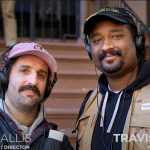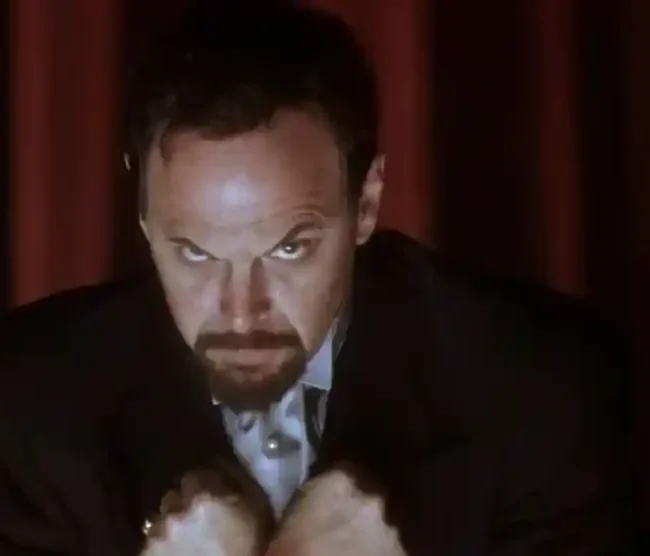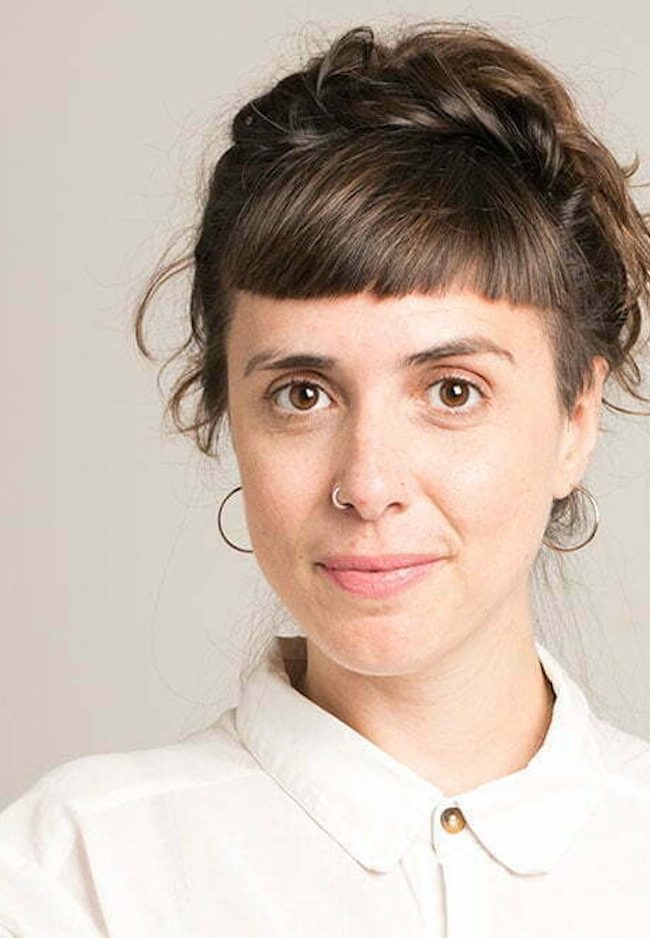I KNOW CATHERINE, THE LOG LADY
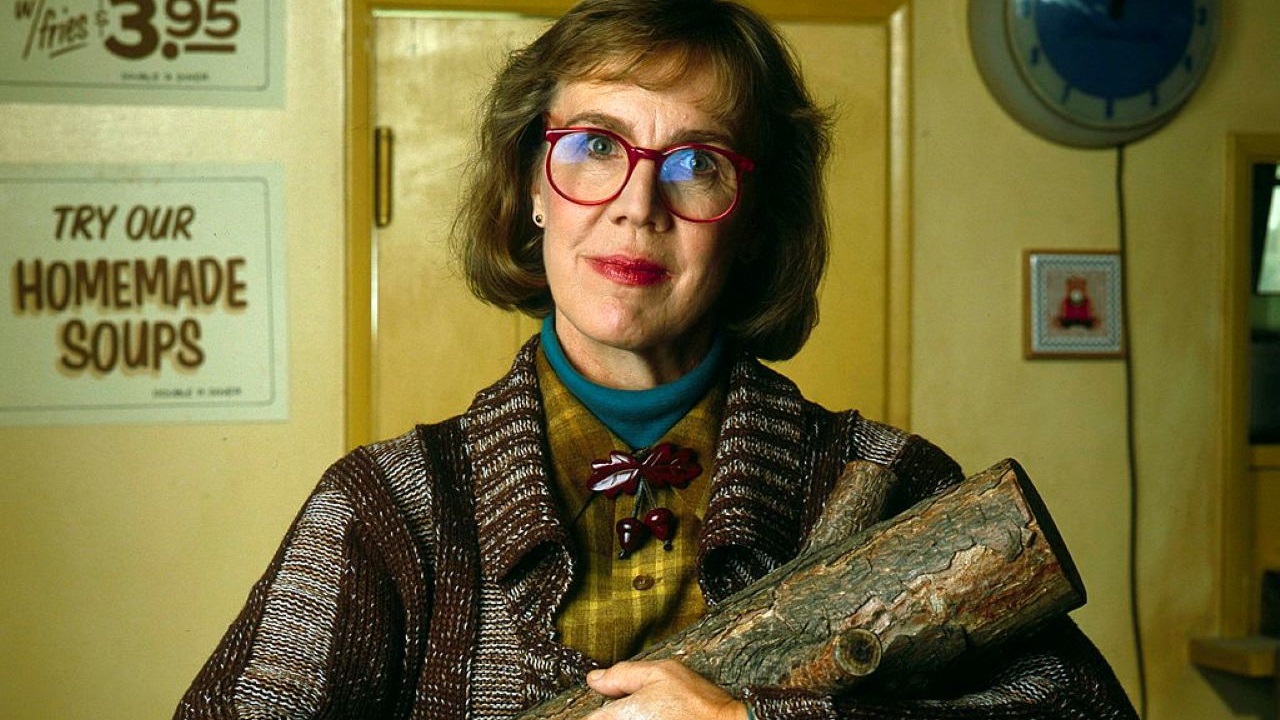
(Check out Jessica Baxter’s I Know Catherine, the Log Lady movie review. It’s in theaters now. Seen it? Join the conversation with HtN on our Letterboxd Page.)
You probably DO know Catherine, the Log Lady. She was an actress for stage and screen, a camera operator for John Cassavetes, and a frequent collaborator with a little auteur you may have heard of called David Lynch. She also played a signature character in Lynch’s seminal TV show, Twin Peaks. The final performance of her career is beautifully captured in the third season of the show, filmed 25 years after season two ended on one of the most infamous cliffhangers of all time. She get shte documentary treatment in Richard Green’s I Know Catherine, the Log Lady.
Sometimes, things fall together so perfectly that it feels pre-ordained. Catherine Coulson got her start in 1960s San Francisco, when she co-founded an acting troupe called The Circus. She met David Lynch working for him behind the camera on his nascent films. Lynch was an audio-visual magician, who assembled an indelible crew to birth what is arguably the most dynamic body of work to grace the large and small screens. Richard Green, who directed this documentary about Catherine’s life, played a character called The Magician in David Lynch’s 2001 masterpiece, Mulholland Dr.
Most know Catherine Coulson as Margaret Lanterman aka “The Log Lady”; a prescient oddball who traversed the cursed town of Twin Peaks, delivering cosmic messages transmitted through an ever-present log that only she could hear. But Coulson was also a very talented stage actor and camera operator, as well as a reliable caretaker for those she loved. Several people interviewed in I Know Catherine mention her penchant for taking in “wounded birds” and “stray dogs.” These birds and dogs were people, and some of them, sadly, were her romantic partners.
Richard Green knew Catherine, and, as a result, became a tertiary figure in Lynch’s social circle. He got the idea for his 2002 documentary, I Don’t Know Jack, at the 1996 memorial for the film’s subject: Eraserhead star Jack Nance. Nance was Catherine Coulson’s first husband, and Catherine was instrumental in corralling David for I Don’t Know Jack. How fitting, then, that Green could bookend the story with I Know Catherine, the Log Lady.
Green includes interviews with many people who knew and loved Catherine (or “Cookie”, as some called her – like the landlord in Mulholland Dr. “Just call me Cookie, everyone does.”) We hear from one of her exes, a man filled with remorse and longing about mistakes he made during their relationship. We hear from family, and collogues throughout her career, her Circus cohorts, actors who worked with her at the Oregon Shakespeare Festival at the time of her diagnosis, Twin Peaks co-creator Mark Frost, Twin Peaks actors (Grace Zabriskie, Kimmy Robertson, Charlotte Stewart, Michael Horse, Dana Ashbrook, and Kyle MacLachlan), and, indubitably, David Lynch.
Green’s film goes deep into Catherine’s life, to show that she was so much more than the things that made her famous. But it also tells a behind-the-scenes story that Twin Peaks fans have longed for since The Return first aired in 2017. Margaret is instrumental in helping to solve the mystery of the missing Agent Cooper (Kyle MacLachlan), delivering her cryptic clues via late-night telephone calls to Chief Deputy Hawk from her cabin in the woods. Her head bares the telltale fuzz of chemo treatments. Her sentences are labored as she breaths through an oxygen tube. Of course, there’s a story here, and you’d better believe it’s a gut-punch.
“I’m dying,” she tells Hawk in their final conversation.
Catherine learned she had stage 4 cancer in 2015, right after signing on to reprise her role for The Return. She waited as long as possible to tell David her prognosis, because she didn’t want him to change his mind about letting her film her scenes. “She wanted to die in Twin Peaks.” And so, she did. As Margaret is dying on screen, so too is Catherine Coulson. She uses her last ounce of strength to give the most iconic performance of her career. Margaret is grappling with imminent death the same way that Coulson is, but she’s also channeling the mystical Zen of the Log Lady to soothe the audience. It’s a whole new level of method acting. Dustin Hoffman could never.
“There’s some fear in letting go,” Margaret says. “You know about death, that it’s just a change, not an end.”
Catherine needed to play this part to conquer her fear of letting go. And the result is a unique and magnificent gift to herself, David, her family, and countless fans around the globe.
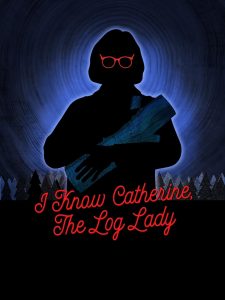
The Return is an elegy to Twin Peaks, as well as, in many ways, the oeuvre of Lynch himself. It was true in 2017, and it’s even more apropos now, having lost David in January of 2025. In I Know Catherine, it’s hard not to feel emotional watching him talk about his lifelong friend, cigarette in hand, head encircled in a cloud of smoke. He famously shied away from press, so when he spoke on camera about something, you know he really wanted to. “Catherine was my number one right hand man,” David said. That speaks volumes about her contributions. His pallid complexion makes it feel like he’s speaking from beyond the grave, where his cigarette is more of an eternal appendage than an instrument in his demise.
David also tells a very intense story about a gruesome health scare for Catherine that he witnessed. This was when she lived with Jack Nance, who had basically become her abusive alcoholic man-child. She had stopped caring for herself so she could give her all to Jack. David was there because he’d recently split with his wife and needed a place to crash. Jack was nursing a hangover, as always, so it was David who called the ambulance when she collapsed on the floor and threw up her stomach lining. “I didn’t really save her life,” he says with a wry smile, “but she thanked me anyway”.
Green uses archival footage, photos, animations, and a few artful re-enactments to tell Catherine’s story from her childhood to her many impressive career pivots, to her tumultuous romantic life, infertility struggles, and the joy of adopting her beloved daughter. She’s credited for being instrumental in keeping the Twin Peaks home fires burning in the interim 25 years, often attending the annual festival in North Bend, WA, and even breaking the news officially, in 2015, that the show was coming back.
The most powerful part of the film comes when they detail what it took to shoot Catherine’s scenes in The Return. Green cuts between interviews with pretty much everyone who was there that night. Catherine had days to live but she still hadn’t told David she was sick. She was scheduled to fly to Washington state to film. Everyone in her life both wanted her to have her last wish of this Twin Peaks sendoff, but also knew she couldn’t possibly make the trip. Once David understood why Catherine couldn’t fly out, he re-wrote her part, hired a remote film crew to come to her house in Ashland, Oregon, and directed the scenes over zoom. Obviously, it was an extremely emotional experience for everyone involved, but they all agreed it was also the most Cookie thing ever.
Some of the crew on set that fateful night in 2015 were under the erroneous impression that this was all a ruse to appease a dying woman. They didn’t realize then that David and Catherine were doing what they always did – alchemize pain and misfortune into profound art.
To die well is perhaps the greatest gift after life itself. There are no prizes at the end for having played it safe or taking it easy. That is certainly something Catherine and David understood about each other. How wonderful that she not only got to go out on her terms but could share that experience with everyone who loved her and create a blueprint for what it means to accept the inevitable, without compromising a second of your precious time on earth.
“My log is turning gold.”
– Jessica Baxter (@TheBaxter)
Richard Green; I Know Catherine, the Log Lady

